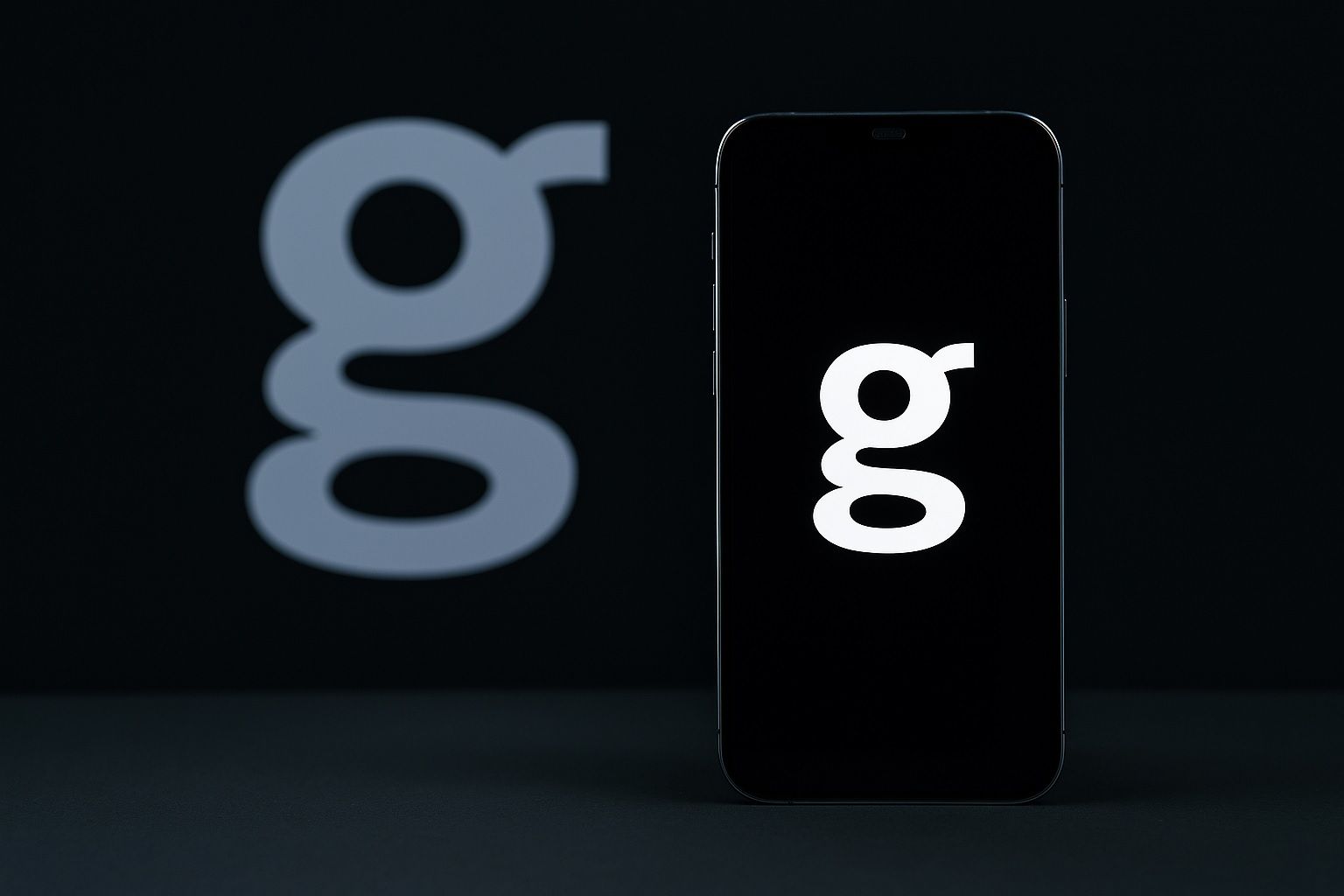- Current Stock Price (Oct 31, 2025): Getty Images (NYSE: GETY) trades around $2.82 per share as of October 31, 2025 [1] [2], after surging nearly 40–50% intraday on news of a major AI partnership. This values the company at roughly $1.1–1.2 billion in market capitalization (about 414.8 million shares outstanding) [3]. (Previous close was $2.01.)
- Recent Stock Performance: GETY’s stock has jumped ~34% in the past week alone and about +60% over the past quarter [4], driven by positive news momentum. Year-to-date, shares are up roughly 30% [5], though the stock still trades ~30% below its level a year ago [6] after a prolonged slump earlier in 2025.
- Business Model: Getty Images is a global leader in visual content licensing, operating a marketplace for stock photos, illustrations, videos, and music. It serves two main markets – Creative content (for advertising, marketing, corporate use) and Editorial content (news, sports, and entertainment imagery) – through brands like Getty Images (premium content and editorial services), iStock (budget stock photos for SMBs), and Unsplash (a free image community) [7]. Getty boasts a vast library (millions of images) and a worldwide customer base, with significant market share especially in editorial images (news and sports) [8]. Major competitors include Shutterstock (its closest rival, especially in stock imagery), Adobe (Adobe Stock platform), and agencies like AP/Alamy and Reuters in news content [9] [10]. Emerging competition from free content sites and AI-generated images is also reshaping the landscape (see below).
- Key Financials (Latest): Getty Images generates nearly $950 million in annual revenue (guidance for 2025 ~$949.5M) [11], growing at a modest ~2–3% annually [12]. In Q2 2025, revenue was $234.9M (up 2.5% YoY) [13]. Profitability is under pressure: the company has posted net losses recently (Q2 GAAP EPS –$0.08 missed estimates [14], trailing-12-month EPS –$0.28 [15]). However, Getty is EBITDA-positive – Q2 adjusted EBITDA was ~$68M (29% margin) [16] – and full-year 2025 EBITDA is forecast around $287M (∼30% margin) [17]. Operating margins have tightened (15.1% in Q2 vs 20.3% a year prior) due to higher costs [18]. Free cash flow is slim (~1–2% of revenue), reflecting heavy investment and expenses [19].
- Debt and Leverage: Getty carries a high debt load, with over $1.3 billion in total debt (debt-to-equity ~2.3x) [20]. In October 2025 the company refinanced and raised debt: it completed an exchange of $294.7M of 9.75% notes (due 2027) for new 14% notes (due 2028), and issued $628.4M of new 10.5% senior secured notes due 2030 [21] [22]. The new financing, at a steep 10.5% interest rate, is largely earmarked to fund a planned acquisition (see below) and refinance existing obligations [23] [24]. Getty’s enterprise value (EV) is around $2.5B, implying substantial net debt alongside its equity market cap [25]. Interest expenses are therefore significant, weighing on net earnings.
- Proposed Merger with Shutterstock: In January 2025 Getty announced a merger of equals with rival Shutterstock to create a “premier visual content company” valued at ~£3 billion (~$3.7B) [26]. The deal terms include Getty paying £245 million in cash plus ~319 million new Getty shares to Shutterstock shareholders [27]. This transformative merger would combine two of the world’s largest photo libraries, but it faces regulatory hurdles. The UK Competition and Markets Authority (CMA) raised concerns that the merger could harm competition (leading to higher prices and fewer choices for customers) [28]. As of Oct 20, 2025, the CMA has referred the deal to an in-depth Phase 2 review unless the companies offer remedies [29] [30]. Shutterstock and Getty remain committed to the deal and are working with regulators [31] [32], but the outcome is uncertain. (The US DOJ is also reviewing the merger [33].) Notably, Getty has placed the $628M raised in escrow to help finance this merger (covering ~$350M cash payout to Shutterstock investors and refinancing Shutterstock’s debt) [34] [35] – underlining that Getty is banking on the combination. If the merger doesn’t close by late 2026, the new notes would be redeemed [36].
- Latest News – AI Partnership Soars Stock: On Oct 31, 2025, Getty announced a multi-year licensing partnership with AI startup Perplexity. The deal allows Perplexity’s AI search tools to display Getty’s extensive library of creative and editorial images [37], with proper attribution (image credits and source links) to ensure legal, licensed use [38] [39]. This partnership taps into a new revenue stream from AI platforms. Investors reacted euphorically – Getty’s stock price soared ~50% in early trading on the news [40], reflecting optimism that Getty can monetize its content in the generative AI boom. (Perplexity will integrate Getty’s API to provide high-quality visuals in AI results [41], a model that could be replicated with other AI players.) The collaboration is part of a broader trend of digital platforms striking licensing deals with content providers to legitimize AI training data and outputs [42]. Getty has been vocal about protecting its IP in the AI era – it previously sued Stability AI (maker of Stable Diffusion) for allegedly scraping millions of Getty images without permission [43]. The Perplexity deal, by contrast, shows Getty’s strategy of partnering with AI companies to get paid for use of its imagery (while ensuring proper credits).
- Other Recent Developments: Getty has pursued several strategic moves in 2025:
- Product Integration: On Oct 30, Getty announced an integration of Getty Images and iStock content into Webflow’s web design platform – making it easier for Webflow’s users to license stock images within that marketplace [44]. This follows similar partnerships to embed Getty’s library into third-party tools, expanding its reach.
- New Content Initiatives: Getty frequently secures deals to be official photographers for major events (e.g. film festivals [45]) and launches marketing initiatives (a recent project with Land O’Lakes to broaden rural imagery representation [46]). These reinforce Getty’s brand and exclusive content offerings, especially in editorial/photojournalism.
- Financial Events: The company will release Q3 2025 earnings on Nov 10, 2025 [47]. (In Q2 it slightly missed revenue estimates and posted a loss, which had initially weighed on shares [48] [49].) Investors will watch if subscription growth and cost controls improved in Q3.
- Corporate:* As mentioned, Getty has been active in refinancing debt (to manage its leverage and prep for the Shutterstock deal), completing an exchange offer for existing notes and issuing new notes in October [50] [51]. While this raises interest costs, it extends maturities and secures funding for strategic moves.
- Analyst & Expert Opinions: Wall Street’s view on GETY is cautious but not bearish. Analyst coverage is limited (roughly 3–5 analysts), with a consensus “Hold” rating [52]. The average 12-month price target is in the mid-$4 range – about $4.1 to $4.4 per share [53] [54], implying potential upside of ~50%+ from current levels. Price targets range from as low as ~$1.85 to as high as ~$7.00, reflecting uncertainty in outcomes [55] [56]. One recent analysis flagged Getty’s sluggish growth and returns as a concern: revenue has grown only ~2.4% annually over five years, free cash flow margins have shrunk to ~1.4%, and return on invested capital (ROIC) has declined – suggesting new investments aren’t yielding strong returns [57] [58]. This analyst argues the company’s fundamentals “present too much downside risk” despite a low valuation (around 2.9× forward EV/EBITDA at ~$2.13/share) [59]. On the other hand, Getty’s low valuation and improving subscription business have some investors optimistic that performance could stabilize. Notably, insiders own ~72% of Getty’s shares [60] (including the Getty family and private equity backers), which aligns management’s interests with turning the business around. Institutional investors hold about 28–31% [61], and the float is relatively small – factors that can amplify volatility. Short interest is moderate (~8.8% of float) [62], indicating some bets against the stock but not extreme levels.
- Short-Term Stock Forecast: In the short run (next few months), Getty’s stock will likely be driven by earnings results and deal news. Positive Q3 earnings (due Nov 10) – e.g. evidence of accelerating revenue or margin improvement – could support the recent rally. Conversely, any soft guidance or further losses might temper enthusiasm. News flow around the Shutterstock merger will also be key: any indication of regulatory blockage or delays (e.g. a tough Phase 2 review outcome in the UK) could hurt the stock, whereas progress toward approval (or remedy proposals) may lift sentiment given the long-term synergy story. The Perplexity deal has injected optimism, and similar AI licensing deals could further re-rate the stock upward in the near term if Getty demonstrates a path to new AI-driven revenue streams. Analysts currently expect the stock to gravitate toward the mid-$4s over the next year [63], but that assumes execution on subscriptions and no major negative surprises.
- Long-Term Outlook – Opportunities & Risks: Over a longer horizon, Getty Images’ trajectory will depend on how it navigates industry disruption and strategic initiatives:
- Generative AI – Threat or Opportunity: The rise of generative AI represents both a competitive threat to traditional stock photography and a new monetization opportunity. AI image generators (like DALL·E, Stable Diffusion, Midjourney) can produce custom images on demand, potentially reducing the need for stock photos. Regulators, however, have noted that as of 2025 GenAI is not yet a full substitute for stock content for most commercial uses [64] – issues of quality, reliability, and copyright make companies wary of relying solely on AI-generated art. Getty has taken a proactive stance: it launched its own AI image generator in late 2023, Generative AI by Getty Images, developed in partnership with Nvidia’s Edify model [65]. Uniquely, this tool is trained exclusively on Getty’s licensed library and offers full legal indemnification to users [66] [67] – meaning brands can create images knowing they won’t face copyright claims, since contributors are compensated. Getty even ensures any AI-generated images won’t be added back to its library unless contributors are paid for their role in training and output [68]. This “ethically sourced” AI approach could become a competitive advantage, attracting customers who need AI creativity with copyright safety. Furthermore, Getty’s willingness to license its content to AI players (as with Perplexity) suggests a potentially rich future revenue stream – essentially charging AI firms for training data or image displays, much like music companies license songs to streaming platforms. If AI search and content creation tools proliferate, Getty could earn royalties whenever those tools pull in its images (provided it strikes licensing agreements, as it is starting to do).
- Core Licensing Business: In its core business, Getty’s long-term health will hinge on maintaining and growing its subscription and enterprise licensing base. The company has been shifting from one-off “agency” sales (where ad agencies or media outlets license single images) toward annual subscription packages and partnerships. In Q2 2025, Getty saw 14% year-over-year growth in annual subscribers (321,000 subscribers) and noted that “premium access” enterprise subscriptions achieved >100% revenue retention again as clients renewed and expanded usage [69] [70]. This suggests that despite industry challenges, there is a stable and even growing recurring revenue stream. Getty’s extensive archives and ongoing coverage of global events (sports, news, entertainment) give it a content moat that can keep media and corporate clients subscribed. Exclusive editorial partnerships (e.g. official photographer roles) and timely coverage of events will remain important to differentiate Getty in the editorial segment. However, the advertising and media markets are cyclical – as seen in 2023–2024 when ad agency demand softened amid macroeconomic uncertainty [71]. If the economy or ad spending slows, Getty’s creative segment may face continued headwinds.
- Merger Synergies vs. Integration: If the Shutterstock merger eventually goes through (likely sometime in 2026 if approved), it would be a game-changer for Getty. The combined entity would unite two top stock content libraries, potentially allowing cost savings (synergies in operations, technology, and content production) and pricing power in the industry. The CMA’s findings highlighted that Getty is the clear leader in editorial images, and Shutterstock is one of the few real alternatives in certain areas [72] – together they’d command an even larger share across both editorial and stock image markets. This could benefit margins long-term if managed well (though regulators may impose conditions to protect customers). On the flip side, integrating Shutterstock brings challenges: Getty would roughly double its share count (diluting current shareholders) and absorb Shutterstock’s debt, and it must smoothly combine two corporate cultures and platforms. There’s also risk that key contributors or clients could defect if they dislike the merger. Additionally, heavy debt from financing the deal would burden the combined company – interest costs could consume a notable chunk of cash flow, putting pressure on management to achieve efficiencies. In sum, while the merger promises a “premier” one-stop-shop for imagery, its success will depend on regulatory clearance and execution post-merger. If the deal fails, Getty will receive the escrowed funds back (after redeeming the new notes) but would remain a smaller standalone firm facing competition from a still-independent Shutterstock.
- Competition & Market Trends: Beyond Shutterstock, Getty faces ongoing competition from both traditional rivals and new models. Adobe has integrated Adobe Stock tightly into Creative Cloud apps, which is attractive to designers. Canva, the graphic design platform, offers an increasingly rich built-in content library (including images from partners like Unsplash, Pexels, and even Getty itself for some content) [73], targeting small businesses and individuals. The UK regulator noted that for SMB customers, Canva is a notable player, though it mainly competes on ease-of-use and template design rather than breadth of stock content [74]. Interestingly, Canva actually licenses some content from Getty [75], meaning Getty still finds ways to monetize even through would-be competitors. In the broader market, there’s a trend of abundant free or low-cost imagery (e.g. Unsplash’s free photos, or cheap subscription bundles from smaller agencies), which keeps pricing competitive. Getty has responded by owning Unsplash (to capture that user segment and funnel them toward premium content) and by emphasizing the quality and legal safety of its library (e.g. model releases, rights clearance, and now AI indemnification). The company’s high gross margin (~66% [76]) suggests it has pricing power on premium content, but sustaining that may require continued curation of unique, high-demand visuals that free repositories can’t easily match.
- Legal Environment: Getty’s aggressive stance on copyright (suing infringers and championing contributor rights) could result in legal wins that shape the industry. For instance, its lawsuit against Stability AI in the UK (and possibly related actions in the US) could establish precedents on whether AI companies must license training data. A positive legal outcome (e.g. damages or a settlement in Getty’s favor) might not only bring in cash but also force industry-wide licensing practices that benefit content owners like Getty [77]. Conversely, drawn-out legal battles cost money (Getty cited elevated legal expenses as a drag on margins in 2025 [78] [79]). The company expects these costs to be one-time, but they could persist if new cases arise. Regulatory scrutiny is another factor – even if Getty/Shutterstock is approved, regulators might keep an eye on pricing and contracts in the stock image market. Overall, intellectual property protection and antitrust considerations are two external factors that could significantly impact Getty’s operations.
Analyst Commentary and Stock Forecast
Financial analysts generally anticipate a gradual recovery for Getty Images, but with some reservations. The consensus forecast calls for low single-digit revenue growth in the near term and a return to modest profitability within a year or two – contingent on expense control and revenue mix improving. For 2025, analysts project full-year revenue around $952M with a slight net loss (EPS around –$0.16) [80], but swinging to positive EPS in 2026 if cost-saving efforts bear fruit. EBITDA is expected to remain healthy (approaching $300M in 2025 per guidance [81]), indicating the core business generates substantial operating cash before debt service. The big unknown in forecasts is the merger: many analysts have likely not fully baked in the Shutterstock deal, given its uncertain approval. If it is approved, forecasts would need a significant revision to account for the combined financials (which could exceed $2 billion in annual revenue, based on Shutterstock’s size, albeit with much higher debt). Until clarity on that front, most price targets (averaging ~$4+) assume Getty continues as a standalone entity improving its performance [82].
In the short term (next 6–12 months), stock momentum could remain positive if Getty shows progress in key areas – e.g. growing its subscription base, stabilizing its creative sales, and signing more AI/content partnerships. The recent Perplexity deal is seen as validation of Getty’s content value in the AI era, and any similar agreements (with, say, big tech AI offerings or other platforms) would likely be well-received. Macro conditions will also play a role: an uptick in advertising and media spending in 2026 could lift demand for creative stock imagery, directly boosting Getty’s top line. Conversely, if economic conditions worsen or if AI tools start eroding traditional licensing demand faster than anticipated, Getty’s revenue could stagnate or decline – a key downside risk.
Over the long term (2–5 years), bullish analysts argue that Getty Images, especially if it merges with Shutterstock, could become a cash-generative powerhouse as the go-to source for legally licensed visual content. The combined content library and customer relationships might allow price increases and higher wallet share from clients, driving margin expansion. Additionally, as generative AI matures, Getty is positioned to be a “toll collector” in AI content creation, earning royalties whenever AI systems use its imagery. There is also optionality in emerging areas like short-form video, VR/AR content, and the creator economy – Getty could expand beyond traditional photos into more immersive media if demand rises, given its experience in visual media rights.
On the bearish side, skeptics highlight structural challenges: slow organic growth (low-single-digit at best in recent years) [83], intense competition (many cheaper alternatives for generic imagery), and the heavy debt burden which could constrain Getty’s ability to invest or weather downturns. If the merger falls apart, Getty would remain a smaller player facing a still-independent, aggressive Shutterstock and an ecosystem where tech giants (Adobe, maybe Google or OpenAI in the future) could push their own content solutions. Even with the merger, the integration risk and interest costs are non-trivial. Furthermore, the rise of free content and crowd-sourced images means Getty must continually justify the premium for its services – through quality, service, and legal safety. Any missteps (such as a major lawsuit from a client using an image with unclear rights, or a PR issue with contributors) could tarnish its reputation.
Bottom line: Getty Images Holdings has transitioned from a struggling SPAC merger stock to a potential turnaround story in late 2025, thanks to bold strategic moves and an evolving industry landscape. The stock’s recent surge shows that investors see new life in the 28-year-old brand as it adapts to the AI age. In the short run, volatility may remain high – a single news headline (good or bad) can swing GETY’s price dramatically, as evidenced by the 50% jump on the AI deal [84]. Long-term investors will be watching how management balances growth initiatives (like AI and possibly a mega-merger) with the nuts-and-bolts work of improving margins and paying down debt. If Getty can successfully navigate its merger approvals, continue monetizing its content in emerging channels, and ride out any economic bumps, the company could emerge as a more dominant and diversified content powerhouse by the late 2020s. However, if growth stalls or external disruptions accelerate (e.g. unlicensed AI image generation undermining the market), GETY could struggle to justify significant upside. As of now, analysts generally advise a wait-and-see approach (Hold) [85] – acknowledging Getty’s valuable assets and recent strategic wins, but also the uncertainties that still loom large over its stock.
Sources:
- Reuters – “Getty shares soar on images deal with Perplexity for AI search” (Oct 31, 2025) [86] [87]
- Investing.com – Getty Images stock price, market cap, and analyst targets (Oct 31, 2025) [88] [89]
- Finviz / StockStory – Market data & performance metrics for GETY (Oct 31, 2025) [90] [91]; Q2 2025 Deep Dive analysis [92] [93]
- Zacks Equity Research – “Getty Images (GETY) Reports Q2 Loss, Lags Revenue Estimates” (Aug 11, 2025) [94] [95]
- Getty Images Press Release (GlobeNewswire) – Debt refinancing & notes offering (Oct 21, 2025) [96] [97]; CMA merger review update (Oct 20, 2025) [98]
- BusinessCloud – “Is Getty-Shutterstock £3bn merger in doubt?” (Oct 21, 2025) [99] [100]
- ts2.tech (Tech News) – Discussion of Getty’s AI strategy and Stability AI lawsuit [101] [102]
- The Verge – “Getty made an AI generator that only trained on its licensed images” (Sep 25, 2023) [103] [104]
- Yahoo Finance / WSJ – Getty/Shutterstock merger regulatory scrutiny (Aug–Oct 2025) [105] [106]
- Getty Images Investor Relations – Q2 2025 results and earnings call highlights [107] [108] (subscription growth, quotes from management).
References
1. www.investing.com, 2. www.investing.com, 3. finviz.com, 4. finviz.com, 5. finviz.com, 6. finviz.com, 7. businesscloud.co.uk, 8. businesscloud.co.uk, 9. businesscloud.co.uk, 10. businesscloud.co.uk, 11. finviz.com, 12. finviz.com, 13. finviz.com, 14. finviz.com, 15. www.investing.com, 16. finviz.com, 17. finviz.com, 18. finviz.com, 19. finviz.com, 20. finviz.com, 21. finviz.com, 22. finviz.com, 23. finviz.com, 24. finviz.com, 25. finviz.com, 26. businesscloud.co.uk, 27. businesscloud.co.uk, 28. businesscloud.co.uk, 29. www.stocktitan.net, 30. businesscloud.co.uk, 31. www.stocktitan.net, 32. businesscloud.co.uk, 33. businesscloud.co.uk, 34. finviz.com, 35. finviz.com, 36. finviz.com, 37. www.stocktitan.net, 38. www.stocktitan.net, 39. www.stocktitan.net, 40. www.reuters.com, 41. www.reuters.com, 42. www.reuters.com, 43. www.reuters.com, 44. finviz.com, 45. finviz.com, 46. finviz.com, 47. finviz.com, 48. finviz.com, 49. finviz.com, 50. finviz.com, 51. finviz.com, 52. www.investing.com, 53. www.investing.com, 54. finviz.com, 55. www.tradingview.com, 56. www.tipranks.com, 57. finviz.com, 58. finviz.com, 59. finviz.com, 60. finviz.com, 61. finviz.com, 62. finviz.com, 63. www.investing.com, 64. businesscloud.co.uk, 65. www.theverge.com, 66. www.theverge.com, 67. www.theverge.com, 68. www.theverge.com, 69. finviz.com, 70. finviz.com, 71. finviz.com, 72. businesscloud.co.uk, 73. businesscloud.co.uk, 74. businesscloud.co.uk, 75. businesscloud.co.uk, 76. finviz.com, 77. finviz.com, 78. finviz.com, 79. finviz.com, 80. finviz.com, 81. finviz.com, 82. www.investing.com, 83. finviz.com, 84. www.reuters.com, 85. www.investing.com, 86. www.reuters.com, 87. www.reuters.com, 88. www.investing.com, 89. www.investing.com, 90. finviz.com, 91. finviz.com, 92. finviz.com, 93. finviz.com, 94. finviz.com, 95. finviz.com, 96. finviz.com, 97. finviz.com, 98. www.stocktitan.net, 99. businesscloud.co.uk, 100. businesscloud.co.uk, 101. www.stocktitan.net, 102. ts2.tech, 103. www.theverge.com, 104. www.theverge.com, 105. businesscloud.co.uk, 106. businesscloud.co.uk, 107. finviz.com, 108. finviz.com







